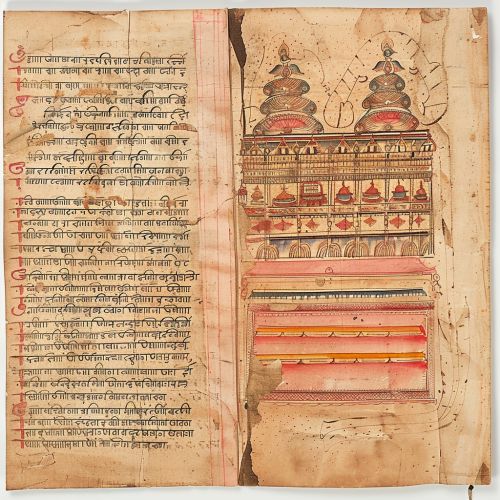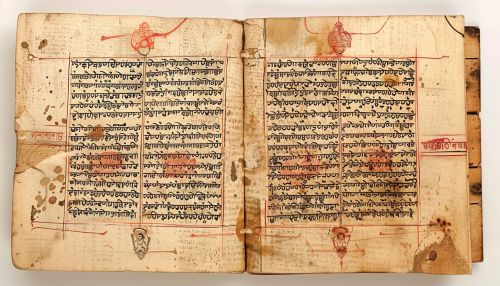Brahmanas
Introduction
The Brahmanas are a collection of ancient Indian texts with commentaries on the hymns of the four Vedas. They are a layer or category of Vedic Sanskrit texts embedded within each Veda, and form a part of the Hindu śruti literature. They are primarily a digest incorporating myths, legends, the explanation of Vedic rituals and in some cases speculations about natural phenomenon or philosophy.
Origin and Development
The Brahmanas are noted to have been developed during the Brahmana period of Vedic Sanskrit, after the Samhita period and before the Upanishads. Their exact chronology is difficult to establish, but they are generally dated from the late 2nd millennium BCE to the early 1st millennium BCE. The Brahmanas were composed and added to the Vedas to explain the rituals and the hymns, making the rituals intelligible and thus practical.


Structure and Content
The Brahmanas are prose texts that comment and explain the solemn rituals as well as expound on their meaning and many connected themes. Each of the Brahmanas is associated with one of the four Vedas, and within the tradition of that Veda with a particular shakha or school:
- The Aitareya Brahmana and the Kaushitaki (or Sankhayana) Brahmana are part of the Rig Veda.
- The Shatapatha Brahmana is a part of the Yajur Veda.
- The Taittiriya Brahmana and Tadvavasamini Brahmana are part of the Black Yajur Veda.
- The Jaiminiya Brahmana and the Chandogya Brahmana are attached to the Samaveda.
- The Gopatha Brahmana is affiliated with the Atharvaveda.
The Brahmanas are particularly noted for their instructions on the proper performance of rituals, as well as explanations on the symbolic importance of every rite. The rituals, moreover, are frequently interwoven with mythology, philosophy, and speculations.
Significance
The Brahmanas represent the transition between the ritualistic Vedic texts and the philosophical Upanishads, thus forming a bridge between the two. They are the first systematic expositions of the Vedic rituals, explaining the symbolic meanings of the rituals and the underlying philosophical and metaphysical tenets. The Brahmanas also contain early speculations of karma (action and consequence), dharma (duty, ethics, moral laws), moksha (liberation from cycle of rebirths), samsara (cycle of rebirths), and the nature of reality.
